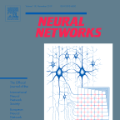A major challenge in applying differential privacy to training deep neural network models is scalability.The widely-used training algorithm, differentially private stochastic gradient descent (DP-SGD), struggles with training moderately-sized neural network models for a value of epsilon corresponding to a high level of privacy protection. In this paper, we explore the idea of dimensionality reduction inspired by neural network pruning to improve the scalability of DP-SGD. We study the interplay between neural network pruning and differential privacy, through the two modes of parameter updates. We call the first mode, parameter freezing, where we pre-prune the network and only update the remaining parameters using DP-SGD. We call the second mode, parameter selection, where we select which parameters to update at each step of training and update only those selected using DP-SGD. In these modes, we use public data for freezing or selecting parameters to avoid privacy loss incurring in these steps. Naturally, the closeness between the private and public data plays an important role in the success of this paradigm. Our experimental results demonstrate how decreasing the parameter space improves differentially private training. Moreover, by studying two popular forms of pruning which do not rely on gradients and do not incur an additional privacy loss, we show that random selection performs on par with magnitude-based selection when it comes to DP-SGD training.
翻译:在应用差异隐私来培训深神经网络模型方面,一个重大挑战是可扩缩性。 广泛使用的培训算法,有差异的私人随机梯度梯度下降(DP-SGD),与培训中度神经网络模型进行中度神经网络模型与高度隐私保护相对应的价值的斗争。 在本文中,我们探讨了由神经网络调整而激发的维度减少概念,以提高DP-SGD的可扩缩性。我们通过两种参数更新模式研究神经网络运行和差异隐私之间的相互作用。我们称之为第一种模式,即参数冻结,我们在此情况下,我们只使用DP-SGD来预植入网络并更新其余参数。我们称之为第二个模式,即参数选择,我们在此选择每一阶段更新参数的参数,仅更新使用DP-SGD选定的参数。在这些模式中,我们使用公共数据来冻结或选择参数,以避免在这些步骤中发生隐私损失。自然,基于私人和公共数据的接近性数据在成功这一模式中起着重要作用。 我们的实验结果显示,参数空间选择的参数将如何降低,而光度则不依靠个人级标准级标准,我们又通过进行更多的空间选择方式来进行。</s>



